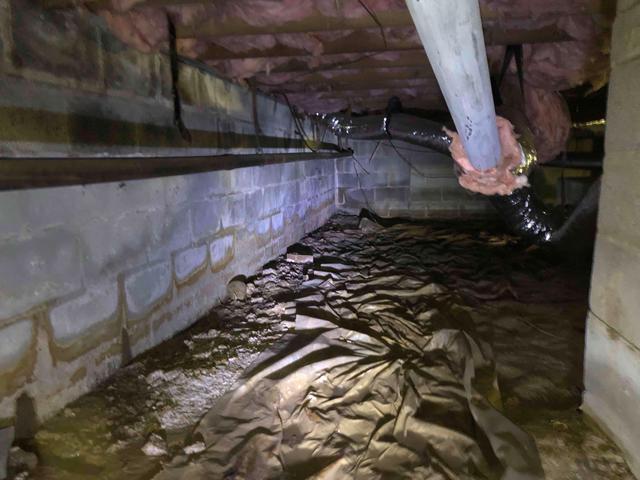
Bulk Water Staining
Staining along the walls is evidence that this crawl space sees a lot of water when it rains, contributing to the dampness in the crawl space and in the home. The existing vapor barrier is not covering the ground completely, nor is it sealed preventing vapor from getting into the crawl space.
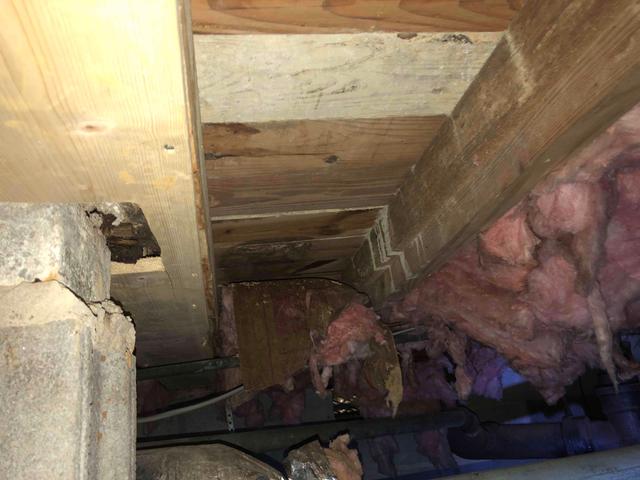
Falling Insulation
Fiberglass insulation absorbs moisture like a sponge and holds it against the joists in your crawl space. As it soaks up this water, it becomes heavier and begins to delaminate and fall. As your insulation falls, you are left with cold floors in the winter, high energy bills, and discomfort in your home.

Mold/Mildew growth on Joists
Microbial growth begins at 60% relative humidity along with warm temperatures. These are conditions we see over half of the year in Richmond and on the Peninsulas. Mold and mildew grow on organic materials such as the joists in your crawl space or the paper backing of fiberglass insulation. As the humidity in the crawl space increases, the wood also absorbs moisture. When wood reaches 19% moisture content or higher the potential for wood rot occurs resulting in costly repairs.
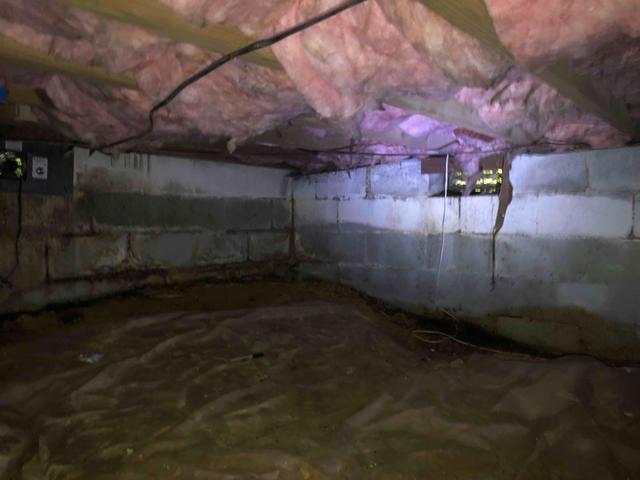
Open Crawl Space Vents
Open crawl space vents are an invitation for warm humid air to pour into your crawl space. Initially these vents were intended to allow enough air flow in the summer to keep under the home dry in the summer. In the winter we thought closing them would keep our floors warm, but it doesn't work. Instead, in the summer warm humid outside air mixes with cooler crawl space air. Cool air doesn't hold as much moisture as warm air, so as the warm outside air pours in and is cooled down, it begins to give up its moisture raising the relative humidity and making it even more damp under the home. In the winter, cold air makes its way in and the fiberglass that fell in the summer isn't there to try and keep our floors tolerable.

Mold in the home
Tri-level homes with a lower level that is adjacent to the crawl space or homes with partial basements and partial crawl spaces often see moisture issues in the adjoining space. In this case, the warm damp air from the crawl space was finding its way into the basement and mold growth was occurring on the drywall.
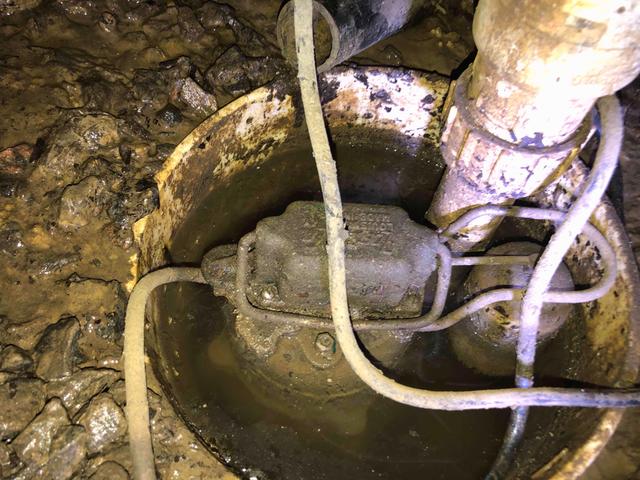
Sump Pump Don'ts
Pumps that sit in a ground basin or bucket aren't effective in keeping water vapor from rising from the ground. They also clog easily, fail frequently, are unsealed and leave you with a bigger mess in your crawl space.

Dehumidifiers in Vented Crawl Spaces
A dehumidifier in a vented crawl space is about as good as setting the unit in the middle of your yard and hoping it will dehumidify the crawl space. A vented crawl space is outside. Typically it is a little cooler than outside but along with that, the relative humidity is higher, resulting in more moisture to remove from the air. As the dehumidifier tries to dry the air, more humid air is dumped in through open vents, the unit always runs, increasing your energy bills and it's not solving the problem you bought it to fix.
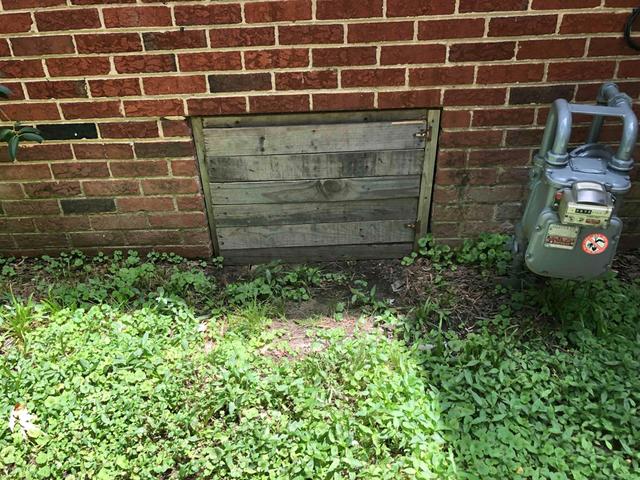
Warped, Damaged, Unsealed Crawl Space doors
Just like your vents, your crawl space door allows hot humid air to dump into the crawl space. Most doors have been warped, rotted, or damaged from being exposed to the elements. Often, crawl space doors do not offer a tight, air sealed fit.


